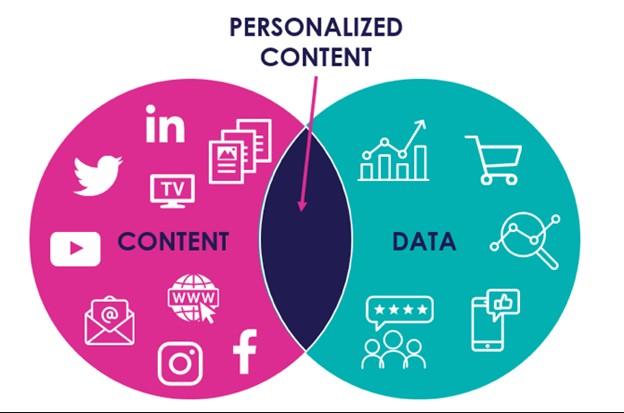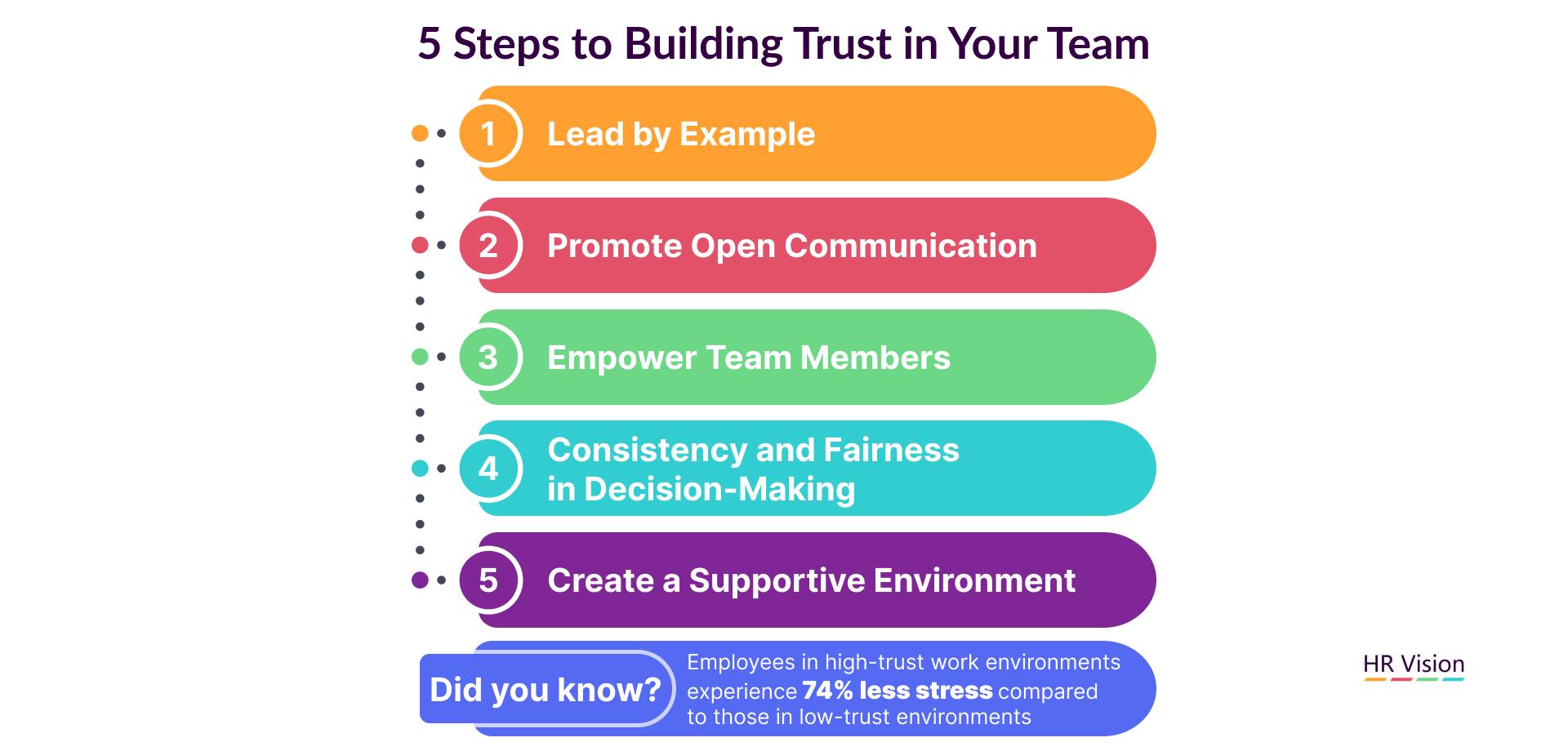In the bustling world of e-commerce, where countless storefronts compete for attention, trust can feel like the elusive golden ticket that separates the thriving businesses from the ones that fade into obscurity. As a new e-commerce store owner, you might be wondering: how can I build that trust with potential customers who have never heard of me? The answer lies in the content you create.
Crafting trust-building content is not just about showcasing your products; it’s about sharing your story, values, and expertise in a way that resonates with your audience.It’s about building a bridge between your brand and your customers, making them feel confident in their decision to shop with you. In this article, we’ll dive into practical strategies and tips to help you create compelling content that fosters trust and encourages your visitors to take that leap from browsing to buying. So, grab a cup of coffee, and let’s explore how you can cultivate a loyal customer base through the power of insightful, authentic, and engaging content!
Understanding the importance of Trust in E-Commerce
In the digital marketplace, trust acts as the foundation upon which consumer relationships are built. When potential customers visit your e-commerce store, they are not just looking for products; they are seeking assurance that their personal information and money are secure. Establishing trust is essential, notably for new e-commerce stores that lack a established reputation. Understanding how to create content that fosters this trust can significantly enhance your chances of success.
one of the most effective ways to instill confidence in your audience is through transparent communication. Be open about your business practices, shipping times, and return policies. Use your website to clearly outline:
- Shipping options and expected delivery times
- Return and refund policies
- Payment security measures
- Customer support availability
By proactively addressing these points, you help customers feel informed and secure in their purchasing decisions.
Another crucial element is customer testimonials and reviews. Featuring authentic feedback from satisfied customers can significantly enhance your credibility. Consider implementing a dedicated section on your product pages that showcases:
| customer Name | Review | Rating |
|---|---|---|
| Jane D. | “Fast shipping and fantastic quality!” | ⭐⭐⭐⭐⭐ |
| Mark R. | “Great customer service and easy return process.” | ⭐⭐⭐⭐ |
| Emily W. | “I love the unique designs; received so many compliments!” | ⭐⭐⭐⭐⭐ |
Incorporating these testimonials not only validates your products but also connects potential customers with real experiences.Visual content,such as high-quality images and videos,can also play a pivotal role in building trust. Showcase your products in use, provide detailed descriptions, and include lifestyle images that resonate with your target audience. The more vividly you present your offerings, the more likely customers are to envision themselves using them.
Lastly, consider implementing a blog or resources section on your website. Providing valuable content related to your niche can position your brand as an authority in the field.Share tips, how-tos, and industry insights that add value to your audience, thereby fostering a sense of trust and loyalty. Engaging content shows that you care about your customers’ interests and needs beyond just making a sale.
Identifying Your target Audience and Their Needs
Understanding who your audience is and what they need is the cornerstone of effective content creation for your e-commerce store. Start by creating detailed buyer personas that encompass demographics, interests, behaviors, and challenges. This will help you paint a vivid picture of who you are trying to reach and allow you to tailor your content accordingly.
Consider segmenting your audience based on the following criteria:
- Demographics: Age, gender, income levels, and education.
- Location: Urban vs. rural, regional preferences, and cultural influences.
- Interests: Hobbies, lifestyle choices, and values that resonate with your products.
- Shopping Behavior: Online shopping preferences, frequency of purchases, and brand loyalty.
once you’ve outlined these segments,delve deeper into their specific needs and pain points. What problems are they trying to solve? How can your products or services address those needs? Engaging with your audience through surveys, social media, or even direct conversations can provide invaluable insights.
Here’s a simple table that summarizes potential audience needs alongside corresponding content types you can create:
| Audience Segment | Need | Content Type |
|---|---|---|
| Young Professionals | Time-efficient solutions | How-to Guides |
| Parents | Safety and quality | Product Reviews |
| Health enthusiasts | Expert advice | Expert Interviews |
| Budget Shoppers | Affordability | comparison Posts |
With this understanding, you can create trust-building content that directly aligns with your audience’s desires. Authenticity is key; when people feel understood and catered to, they are more likely to engage and convert. Don’t shy away from sharing stories or testimonials that reflect your audience’s experiences, as real-life examples can resonate deeply.
Creating content that speaks to your audience’s needs is not just about selling a product; it’s about building a community. Through informative articles,relatable social media posts,and engaging video content,you can foster a sense of belonging that encourages customers to choose your brand over competitors. Ultimately,the more you invest in understanding your audience,the more effective your content will become in fostering trust and loyalty.

Crafting Authentic Brand Stories That Resonate
In today’s crowded e-commerce landscape,standing out is more significant than ever,and one of the most effective ways to do this is by weaving authentic stories into your brand narrative. When customers feel a connection to your story, they’re not just buying products; they’re investing in a relationship. Here are some strategies to help you craft compelling brand stories that will resonate with your audience.
Understand Your Audience
To create a story that connects, start by understanding who your audience is. Conduct surveys, engage in social listening, and analyze customer feedback. By understanding their needs, desires, and pain points, you can tailor your brand narrative to speak directly to them.
highlight Your Values
every brand stands for something. Whether it’s sustainability, innovation, or community, let your core values shine through your storytelling. Share anecdotes that exemplify these values in action. For instance, if sustainability is central to your brand, discuss how your products are made with eco-kind materials or how you contribute to environmental causes.
Use Real Voices
Incorporate testimonials and stories from real customers. This not only adds authenticity but also builds trust. Consider creating a section on your website where customers can share their experiences with your products. use quotes, images, or even video snippets to bring these stories to life.
Be Transparent
Transparency is a cornerstone of trust. Share the journey of your products—from the sourcing of materials to the manufacturing process. Create content that demystifies what goes on behind the scenes. A simple infographic or timeline can effectively communicate this journey:
| Stage | Description |
|---|---|
| 1. Sourcing | Raw materials are sourced from ethical suppliers. |
| 2. Production | Products are crafted with care in sustainable facilities. |
| 3. Packaging | Eco-friendly packaging is used to minimize waste. |
| 4. Delivery | Shipping options that reduce carbon footprints are offered. |
Create Engaging Visuals
A picture is worth a thousand words, and in the realm of e-commerce, visuals can significantly enhance your storytelling. Use high-quality images, videos, and even infographics to complement your narrative. Consider behind-the-scenes footage or a day-in-the-life of your team to humanize your brand further.
Encourage Community Involvement
Lastly, invite your customers to become a part of your brand story. Create campaigns that encourage them to share their own experiences, whether through social media hashtags, contests, or feature stories on your website. This not only builds a sense of community but also fosters loyalty as customers feel valued and heard.
Showcasing Customer Testimonials and Reviews Effectively
In the world of e-commerce, customer testimonials and reviews can be the deciding factor for potential buyers. They provide social proof and help build trust in your brand.Here are some effective strategies to showcase these valuable insights:
- Highlight Authenticity: Use real names, photos, and even video testimonials wherever possible. Authenticity resonates with potential customers and makes testimonials more relatable.
- Segment Testimonials by Category: Organize reviews based on product type or customer demographics. This allows visitors to find testimonials that speak directly to their needs and interests.
- Incorporate Ratings: Display product ratings alongside testimonials. A visual representation, like stars, helps quickly convey customer satisfaction levels.
Consider creating a dedicated section on your homepage or product pages for testimonials. This prominent placement ensures that visitors will see them without needing to search. Additionally,you can create a rotating carousel of testimonials to keep the content fresh and engaging.
| Customer Name | Product | Rating | Testimonial |
|---|---|---|---|
| Jane Doe | Wireless Headphones | ⭐⭐⭐⭐⭐ | “These headphones have changed my daily commute! Amazing sound quality!” |
| John Smith | Eco-Friendly Water Bottle | ⭐⭐⭐⭐ | “Love that it’s sustainable and keeps my drinks cold for hours!” |
| Emily Johnson | Yoga Mat | ⭐⭐⭐⭐⭐ | “The grip is fantastic, and it’s so comfortable to practice on!” |
Don’t forget to encourage customers to leave reviews after their purchase. A simple follow-up email asking for feedback can significantly increase the number of testimonials you receive. Consider offering a small incentive, like a discount on their next purchase, to motivate customers to share their experiences.
Incorporating user-generated content, such as photos of customers using your products, can further enhance the relatability of your testimonials. Create a dedicated hashtag for your brand and encourage customers to share their experiences on social media. This not only builds community but also provides you with fresh content to share on your own platforms.

Utilizing High-quality Visuals to Enhance Credibility
When it comes to e-commerce, first impressions matter, and high-quality visuals are essential for establishing trust with your audience. Shoppers are more likely to buy from brands that present themselves professionally. Here are some effective ways to utilize visuals that enhance your credibility:
- Professional Product Photography: Invest in high-resolution images that showcase your products from multiple angles. Clear, detailed photos help customers visualize the product, making it feel more tangible and desirable.
- Consistent Branding: Use a cohesive color palette and design style across all images. This consistency builds brand recognition and reinforces the identity you want to portray.
- Customer-Generated Content: Encourage customers to share their own photos using your products. This not only adds authenticity but also fosters community and trust among potential buyers.
- Infographics: Create infographics to explain complex information or compare products. Well-designed infographics can make your content more digestible and visually appealing.
Incorporating visual testimonials can also significantly enhance your credibility. Consider displaying customer reviews alongside their photos or videos. Visual testimonials not only highlight your product’s quality but also demonstrate genuine customer satisfaction. This social proof can be a powerful motivator for new visitors.
Another effective tactic is to utilize lifestyle images that depict your products in real-life scenarios. This approach helps potential buyers envision how the product fits into their lives, increasing the likelihood of a purchase. For example, if you sell kitchen gadgets, show them in action during a cooking session. This not only enhances the appeal of your product but also gives context to its use.
Lastly, don’t underestimate the impact of high-quality graphics on your website. A well-designed layout,engaging banners,and eye-catching icons can enhance the overall user experience. A polished website conveys professionalism and reliability,making visitors more inclined to trust your brand. Combine these elements with informative blog posts or guides, and you’ll create a compelling reason for customers to stay and explore.
| Type of Visual | benefit |
|---|---|
| Product Photography | Builds trust through clarity |
| Customer Photos | Increases authenticity |
| Lifestyle images | Enhances relatability |
| Infographics | Makes information accessible |

Creating Informative and Engaging Product Descriptions
when it comes to e-commerce, the product description is your golden prospect to build trust and entice potential customers. A well-crafted description goes beyond simply stating the features; it creates a narrative that resonates with your audience. Here are some essential elements to consider when writing descriptions that not only inform but also engage.
Highlight Key Benefits
Customers want to know how a product will improve their lives. Instead of listing features like “water-resistant” or “made from organic cotton,” explain why those features matter. Such as:
- Water-resistant: Stay dry during unexpected downpours, ensuring comfort and confidence.
- Organic Cotton: Enjoy a soft, breathable fabric that’s gentle on your skin and the planet.
Tell a Story
People connect with stories. Create a narrative around your product that evokes emotions. Share how it was developed or the inspiration behind its creation. For instance, if your selling handmade jewelry, discuss the artisan’s journey and the craftsmanship involved in each piece.
Use Engaging Language
Paint a picture with your words. Use descriptive adjectives and active verbs that evoke sensory experiences. Rather of saying “Our coffee is strong,” try “Our bold coffee awakens your senses with every sip.” This not only engages readers but also helps them visualize the product in their lives.
Incorporate User Reviews
Nothing builds trust quite like social proof.Include snippets of positive reviews directly in your product descriptions. this can reassure potential buyers by showcasing others’ satisfaction. For example:
“I can’t imagine my mornings without this coffee. it’s rich and full of flavor!” – Jane D.
| Feature | Customer Benefit |
|---|---|
| Eco-friendly packaging | Reduce your carbon footprint while enjoying your purchase. |
| Adjustable sizing | Perfect fit for every body type, ensuring comfort and style. |
maintain a Consistent Tone
Your brand’s voice should shine through every product description. Whether your style is playful, sophisticated, or straightforward, consistency is key.This familiarity helps build a connection with your audience, making them more likely to trust and purchase from you.

Building a User-Friendly Website for Seamless navigation
Creating a user-friendly website is crucial for e-commerce success. When visitors arrive at your site, they should feel welcomed and guided effortlessly through their shopping journey. Here are some vital elements to consider:
- Intuitive Menu Structure: organize your categories logically and keep the navigation bar visible at all times. This ensures users can quickly find what they are looking for without frustration.
- Responsive Design: Ensure your website is mobile-friendly. A significant portion of online shopping is done on mobile devices, so your site must adapt seamlessly to different screen sizes.
- Search Functionality: Offer a robust search feature that allows users to find products easily. Consider adding filters to refine results based on price, size, color, and othre relevant attributes.
In addition to navigation,your website’s loading speed can greatly influence user experience. A delay of even a few seconds can lead to high bounce rates. To optimize speed, consider:
- Image Compression: Use tools to reduce image sizes without sacrificing quality, which can enhance load times significantly.
- Minimizing Redirects: Every redirect creates additional HTTP requests, slowing down your site.Keep them to a minimum.
- Utilizing Content Delivery Networks (CDNs): cdns distribute your site’s content across various locations, reducing the physical distance to servers and speeding up access times for users.
Another key aspect of a user-friendly website is the incorporation of trust signals. These not only enhance usability but also build confidence among potential buyers. Consider implementing:
| Trust Signals | Description |
|---|---|
| Customer Reviews | Display real customer feedback to showcase product quality and service reliability. |
| Security Badges | Showcase secure payment options and certificates to reassure customers about their data safety. |
| Clear Return Policy | Provide an easily accessible return policy to give customers peace of mind about their purchases. |
Lastly, a well-designed website should feature compelling, easy-to-read content. Use clear headings, bullet points, and engaging visuals to keep visitors interested and informed. high-quality images, videos, and infographics can break up text and facilitate better understanding of your products.
by prioritizing these elements, you’ll create a website that not only attracts visitors but also keeps them engaged and encourages sales. Remember, a positive user experience is essential for converting first-time visitors into loyal customers.

Implementing Secure Payment Options to Foster Confidence
In today’s digital age, customers expect a seamless and secure shopping experience. Implementing secure payment options is crucial for e-commerce stores to build trust and encourage repeat business. Here are some effective strategies to enhance payment security and instill confidence in your customers:
- SSL Certification: Ensure your website is equipped with an SSL certificate. This encrypts sensitive information, like credit card details, making it more tough for hackers to access.
- Reputable Payment Gateways: Choose well-known payment gateways such as PayPal, Stripe, or Square.These services offer advanced security features and are trusted by customers worldwide.
- Two-Factor Authentication: implement two-factor authentication for transactions. This adds an extra layer of security by requiring customers to verify their identity through a second device.
- Transparent Return Policies: Clearly outline your return and refund policies. Customers feel more secure knowing they have options if something goes wrong with their purchase.
Moreover, displaying security badges on your checkout page can significantly boost customer confidence. these badges signify that your website is safe and trustworthy. Here’s a simple table illustrating common security badges and their meanings:
| Badge | Meaning |
|---|---|
| SSL secured | Your data is encrypted and secure. |
| Money Back Guarantee | Refunds if you are not satisfied. |
| Trusted payment Processor | Payments handled by a reliable third party. |
| Verified by Visa/MasterCard SecureCode | Added verification for credit card payments. |
Regularly updating your security protocols is essential. Keeping software up-to-date and conducting routine security audits can prevent breaches that may compromise customer trust. Inform your customers about the steps you take to secure their transactions through blog posts or newsletters. This transparency reinforces your commitment to their safety.
Lastly, consider integrating alternative payment options such as digital wallets or cryptocurrencies. These methods not only cater to different customer preferences but also provide an added layer of anonymity, appealing to those who prioritize privacy. By offering diverse and secure payment methods, you create a more inclusive shopping surroundings that can enhance overall customer satisfaction.

Offering Transparent Shipping and Return Policies
In the world of e-commerce, building trust with your customers is paramount, and a key aspect of that trust lies in your shipping and return policies. When consumers feel confident about how their orders will be handled, they are more likely to complete a purchase. Clear and transparent policies can significantly reduce cart abandonment rates and increase customer loyalty.
Start by outlining your shipping options.Provide a detailed explanation of:
- Shipping Methods: Specify whether you offer standard, expedited, or overnight shipping.
- Delivery Times: Include estimated delivery times for each shipping method to set clear expectations.
- Shipping Costs: Make sure to mention if you provide free shipping over a certain amount or if flat rates are available.
Next, ensure your return policy is equally straightforward. Customers want to know they can return items easily if they are not satisfied. your return policy should cover:
- Return window: Clearly state how long customers have to initiate a return after receiving their purchase.
- Condition Requirements: Mention if items need to be unused, unopened, or in original packaging.
- Refund Process: Explain how refunds will be processed, including timelines and any potential fees.
Consider using a table to present your shipping and return options in a clear and concise manner:
| Shipping Method | Delivery Time | Cost |
|---|---|---|
| Standard Shipping | 3-5 Business Days | free on orders over $50 |
| Expedited Shipping | 1-2 Business Days | $15 |
| Overnight Shipping | 1 Business Day | $30 |
don’t underestimate the power of customer testimonials regarding your shipping and return processes. highlighting feedback from satisfied customers can reassure potential buyers that your policies are as effective and customer-friendly as you claim. Consider creating a dedicated section on your website for these testimonials, showcasing real experiences while emphasizing your commitment to customer satisfaction.
by being transparent about your shipping and return policies, you’re not just providing information—you’re building a foundation of trust.This openness invites customers into a relationship where they feel valued and understood, encouraging them to return to your store time and again.

Leveraging Social Proof to Boost Consumer Trust
In the crowded space of e-commerce, gaining consumer trust is paramount. One effective way to achieve this is by leveraging social proof, which taps into our natural tendency to look to others when making decisions. Consumers frequently enough seek reassurance from their peers; thus,showcasing how others view your products can be a game-changer.
Here are some strategies to effectively incorporate social proof into your content:
- Customer Reviews and Testimonials: Highlighting positive experiences from satisfied customers can significantly enhance your credibility.Include direct quotes and ratings to make these testimonials relatable and authentic.
- User-Generated Content: Encourage your customers to share photos and videos of your products in action. This not only builds community but also provides real-life examples of how your products fit into everyday life.
- Influencer Endorsements: Collaborating with influencers who resonate with your target audience can lend your brand a trusted voice. Ensure their endorsement feels genuine and aligns with your brand values.
- Case Studies: Share detailed stories of how your products have resolved specific problems for real customers. This format not only demonstrates efficacy but also builds a narrative that potential buyers can relate to.
Additionally, incorporating metrics and statistics can strengthen your social proof. For instance, if you can share that “95% of our customers would reccommend our products to a friend,” it provides tangible evidence of your product’s effectiveness. Consider displaying such statistics prominently on your site or within your marketing materials.
It’s also beneficial to create a trust badge section on your website. These badges can include certifications, awards, or even media mentions. Displaying these elements adds an extra layer of legitimacy and can influence a customer’s decision-making process positively.
consider utilizing a table format to present your social proof visually, showcasing customer satisfaction metrics or product ratings. Below is a simple example:
| Product | Average Rating | Number of Reviews |
|---|---|---|
| Product A | 4.8/5 | 120+ |
| Product B | 4.6/5 | 85+ |
| Product C | 4.9/5 | 200+ |
By effectively integrating these forms of social proof into your content strategy, you can foster a sense of trust and reliability that encourages potential customers to make a purchase. Remember, trust is built through transparency and authentic connections, so make sure to keep your content genuine and relatable.

Engaging with Your Audience Through Personalized Content
building trust with your audience is essential, especially for new e-commerce stores looking to carve out a niche in a crowded market. One effective way to foster this trust is through personalized content that resonates with your audience at a deeper level. When your customers feel seen and understood, they’re more likely to engage with your brand and make a purchase.
You can start by segmenting your audience based on their behavior, preferences, and demographics.Use this data to craft tailored emails, product recommendations, and marketing messages that speak directly to each group. Consider the following strategies:
- Dynamic Email Campaigns: Customize your email content based on previous purchases or browsing behavior.
- Product Recommendations: Use algorithms to suggest products that align with customers’ interests.
- Targeted Social Media Ads: Create ads that reflect the unique needs of different audience segments.
Engagement can also be enhanced through interactive content. Quizzes, polls, and surveys not only capture attention but also provide valuable insights into your audience’s preferences and expectations. When customers participate, they feel more connected to your brand. Here are some ideas for interactive content:
- Style Quizzes: Help customers find products that match their personal style.
- Feedback Surveys: Solicit opinions about your products or website experience to refine your offerings.
- Contests and Giveaways: Encourage sharing and participation, which increases brand visibility.
another powerful method to personalize the customer experience is through user-generated content. Encourage your customers to share their experiences with your products on social media or your site. This not only adds authenticity but also makes your audience feel valued and part of a community. Display these testimonials prominently to build credibility:
| Customer Name | Product Purchased | Review |
|---|---|---|
| Jane doe | Eco-Friendly Tote | “Absolutely love this bag! Perfect for daily errands.” |
| John Smith | Luxury Skincare Set | “My skin has never felt better. Highly recommend!” |
| Emily Johnson | Handmade Jewelry | “Lovely craftsmanship and fast shipping!” |
ensure that your brand voice is consistent across all platforms. When your messaging and tone are aligned, it strengthens your brand identity and enhances customer loyalty. Use storytelling to connect emotionally with your audience, sharing your brand’s journey, values, and mission. This transparency fosters a deeper connection,making your audience feel like they’re part of something bigger.

Measuring Trust-Building Content Success and Making Adjustments
Measuring the success of your trust-building content is crucial for your e-commerce store’s growth. To ensure your efforts yield positive results, you must track various metrics that reveal how your audience perceives your brand. Here are some key indicators to monitor:
- Engagement rates: Look at likes, shares, comments, and time spent on your content. High engagement frequently enough signals that your audience finds your content valuable and trustworthy.
- Conversion Rates: Analyze how many visitors proceed to make a purchase after consuming your trust-building content. A strong correlation between the two indicates that your content is resonating with potential buyers.
- Feedback and Reviews: Pay attention to customer feedback,whether through direct reviews or social media mentions. Positive feedback can reinforce your brand’s credibility.
- traffic Sources: Identify where your visitors come from. Are they finding you through organic search, social media, or paid ads? This can inform you where to focus your content efforts.
Once you have collected this data, it’s time to analyze it thoroughly. Look for patterns that can help you understand what works and what doesn’t. As a notable example, you may notice that video content generates more engagement than written articles. If that’s the case, consider shifting some of your resources towards creating more engaging videos.
Another aspect to consider is A/B testing. This method allows you to experiment with different versions of your content to see which performs better. You can test headlines, images, and even the formats of your content. This iterative approach can help you refine your strategy over time, leading to better trust and connection with your audience.
Don’t hesitate to adjust your trust-building tactics based on the insights you gather. If a particular type of content isn’t resonating, pivot to something else that aligns better with your audience’s interests. Adaptability is key in the e-commerce landscape, where trends can change rapidly.
Lastly, remember that building trust takes time. Monitor your metrics consistently and remain patient. Over time, as you refine your content strategy based on solid data, you’ll begin to see the fruits of your labor in increased customer loyalty and sales.
Frequently Asked Questions (FAQ)
Q&A: How To Create Trust-Building Content for New E-Commerce Stores
Q: Why is trust-building content important for new e-commerce stores?
A: Trust-building content is crucial for new e-commerce stores because it helps establish credibility with potential customers. When people shop online, they can’t physically see or touch products, so they rely heavily on the information and impressions they gather from a website. Trustworthy content reassures customers that they’re making a safe investment and encourages them to complete their purchases.
Q: What types of content can help build trust?
A: There are several effective types of content for building trust.Customer testimonials and reviews showcase real experiences,while detailed product descriptions and high-quality images help customers feel more confident in their choices. Educational blog posts that address common questions or concerns can also position your brand as an authority in your niche. Plus, transparent policies on shipping, returns, and privacy can significantly enhance trust.
Q: How can I use testimonials effectively?
A: Testimonials should be prominently displayed on your website, ideally on product pages and a dedicated testimonials page. use real names and, if possible, photos of the customers to make them more relatable and authentic. Video testimonials can be particularly powerful, as they add a personal touch and convey emotion that text alone doesn’t. Highlight specific benefits or unique experiences to make them compelling.
Q: Should I include a blog on my e-commerce site?
A: Absolutely! A blog is a fantastic way to share valuable information that positions you as an industry expert. It’s also a great platform for storytelling – share the story behind your brand, your values, and how your products are made. This humanizes your business and creates emotional connections with your audience. Plus, regular blog content can boost your SEO, driving more organic traffic to your store.
Q: What about social proof? How can I incorporate that?
A: Social proof is a powerful trust-building tool! You can showcase your social media following, engagement metrics, or user-generated content.Consider featuring posts from satisfied customers who tag your products on social media. You can also display badges or awards your store has received, or highlight your association with reputable brands or partners. This lends credibility and makes your store appear more established.
Q: How important are clear policies on shipping and returns?
A: They are extremely important! Clear, concise, and fair shipping and return policies help set realistic expectations and reassure customers. Make sure these policies are easily accessible on your website. You might even want to consider a FAQ section to preemptively address common concerns customers might have about these topics.
Q: Can I measure the effectiveness of my trust-building content?
A: Definitely! There are several metrics you can track to assess your content’s effectiveness. Look at conversion rates, bounce rates, and average time on page to gauge engagement. Also, gather customer feedback through surveys and reviews to understand what content resonates most with your audience. Monitoring social media engagement is another great way to see how well your content is connecting.
Q: What’s the one piece of advice you’d give to a new e-commerce store owner?
A: Focus on authenticity! Be transparent about who you are, what you believe in, and how your products can solve customers’ problems. Authenticity resonates with people and builds trust naturally. Remember, in the world of e-commerce, trust is currency, so invest in creating genuine connections with your audience!
Concluding Remarks
As we wrap up our exploration of trust-building content for new e-commerce stores, remember that the foundation of any accomplished online business lies in the relationships you establish with your customers. By prioritizing transparency, authenticity, and value in your content, you’re not just promoting products—you’re building a community of loyal supporters who believe in your brand.
So, take these strategies to heart: share your story, highlight customer testimonials, create informative guides, and showcase your products in action. Every piece of content is an opportunity to connect, engage, and reassure your audience that they can count on you.
Now, it’s time to put these insights into action. Don’t let hesitation hold you back; start crafting that trust-building content today! Your e-commerce store has the potential to be more than just a transactional platform—it can be a trusted resource and a favorite destination for your customers. Happy creating!



